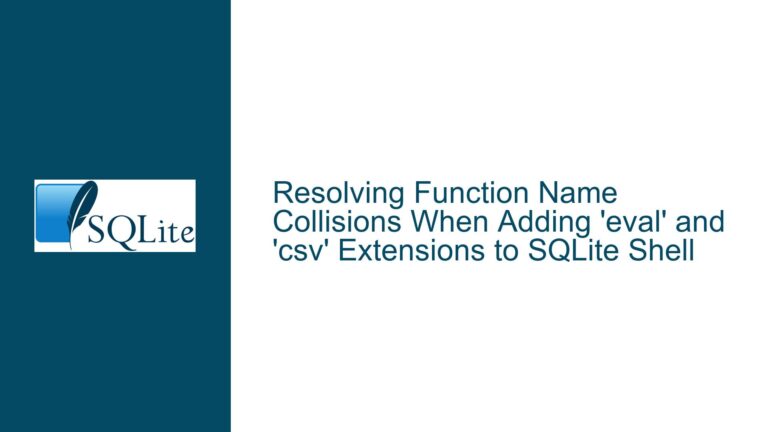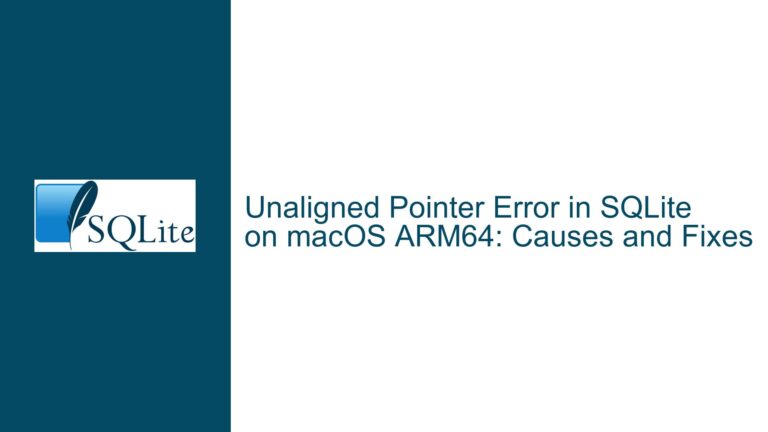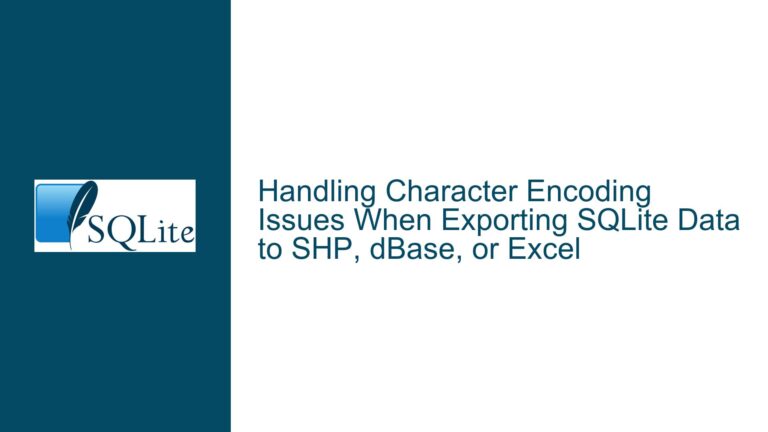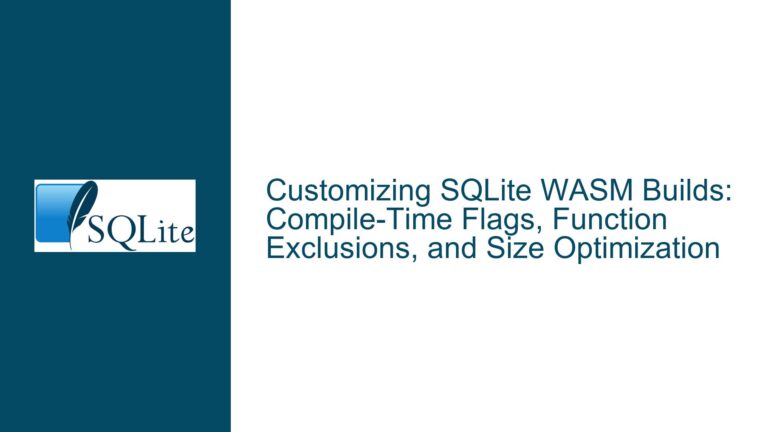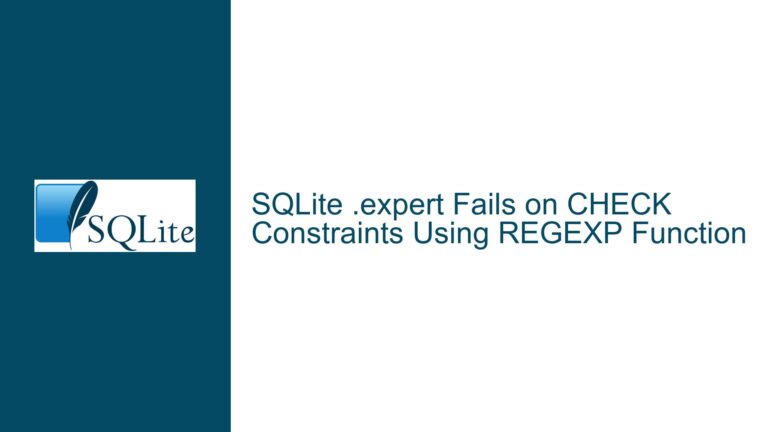Resolving Symbolic Links and Using `openat` in SQLite for Robust File Handling
Issue Overview: Symbolic Link Resolution and openat in SQLite
The core issue revolves around how SQLite handles symbolic links in Unix-based systems when opening database files and their associated files (e.g., journal, WAL, and SHM files). The current behavior, introduced in SQLite 3.39.0, resolves all symbolic links in the database file path to create a canonical name before opening the file. This approach ensures that the database and its associated files are consistently placed in the same directory. However, this behavior has unintended consequences, particularly when parent directories are renamed or when symbolic links are retargeted at runtime. The request is to modify this behavior to use the openat system call, which would allow SQLite to open files relative to a directory file descriptor, ensuring robustness against such runtime changes.
The primary concern is that the current implementation resolves all symbolic links in the path, which can lead to inconsistencies if any parent directory is renamed or if symbolic links are retargeted. This is particularly problematic for long-running applications where the directory structure might change during the application’s lifetime. The proposed solution is to use openat to open the database and its associated files relative to the parent directory, ensuring that all files remain in the same directory even if the directory structure changes.
Possible Causes: Why Symbolic Link Resolution and openat Matter
The issue arises from the way SQLite interacts with the filesystem in Unix-based systems. When SQLite opens a database file, it needs to ensure that all associated files (journal, WAL, and SHM) are placed in the same directory as the database file. This is crucial for the correct functioning of SQLite’s transaction and concurrency mechanisms. The current implementation resolves all symbolic links in the path to create a canonical name, which ensures that all files are placed in the same directory. However, this approach has several drawbacks.
First, resolving all symbolic links in the path can lead to inconsistencies if any parent directory is renamed or if symbolic links are retargeted. This is because the resolved path might no longer point to the correct directory if the directory structure changes. Second, the current implementation does not use the openat system call, which would allow SQLite to open files relative to a directory file descriptor. Using openat would ensure that all files are opened relative to the same directory, even if the directory structure changes.
Another possible cause of the issue is the interaction between symbolic link resolution and the SQLITE_OPEN_NOFOLLOW flag. The SQLITE_OPEN_NOFOLLOW flag is used to prevent SQLite from following symbolic links when opening a file. However, the current implementation still resolves all symbolic links in the path, even if this flag is set. This can lead to unexpected behavior, particularly if the application relies on the SQLITE_OPEN_NOFOLLOW flag to prevent symbolic link resolution.
Troubleshooting Steps, Solutions & Fixes: Implementing openat and Revisiting Symbolic Link Resolution
To address the issue, SQLite should be modified to use the openat system call when opening database files and their associated files. This would involve several steps:
Modify the File Opening Mechanism to Use
openat: The first step is to modify the file opening mechanism in SQLite to use theopenatsystem call. This would involve opening the parent directory of the database file using theopensystem call and then using theopenatsystem call to open the database file and its associated files relative to the parent directory file descriptor. This would ensure that all files are opened relative to the same directory, even if the directory structure changes.Revisit Symbolic Link Resolution: The second step is to revisit the symbolic link resolution mechanism in SQLite. Instead of resolving all symbolic links in the path, SQLite should only resolve the symbolic links for the file itself. This would ensure that the parent directory can be a symbolic link without being resolved, and it would be robust against symbolic links being retargeted at runtime. This change would also require revisiting the interaction between symbolic link resolution and the
SQLITE_OPEN_NOFOLLOWflag.Introduce a New Flag for
openatBehavior: The third step is to introduce a new flag, such asSQLITE_OPEN_OPENAT, to allow clients to opt into the new behavior. This would provide backward compatibility for existing applications that rely on the current behavior while allowing new applications to take advantage of the improved robustness provided by theopenatsystem call. The new flag would control whether SQLite uses theopenatsystem call when opening files.Testing and Validation: The final step is to thoroughly test and validate the new implementation. This would involve testing the new behavior in various scenarios, including cases where parent directories are renamed, symbolic links are retargeted, and the
SQLITE_OPEN_NOFOLLOWflag is used. The testing should also include long-running applications to ensure that the new implementation is robust against changes in the directory structure over time.
By implementing these changes, SQLite would be able to handle symbolic links and directory changes more robustly, ensuring that database files and their associated files remain consistently placed in the same directory. This would improve the reliability of SQLite in long-running applications and in environments where the directory structure might change during the application’s lifetime.
In conclusion, the issue of symbolic link resolution and the use of openat in SQLite is a complex one that requires careful consideration of the interactions between the filesystem, symbolic links, and SQLite’s file opening mechanism. By modifying SQLite to use openat and revisiting the symbolic link resolution mechanism, SQLite can be made more robust against changes in the directory structure, improving its reliability in a wide range of use cases.


